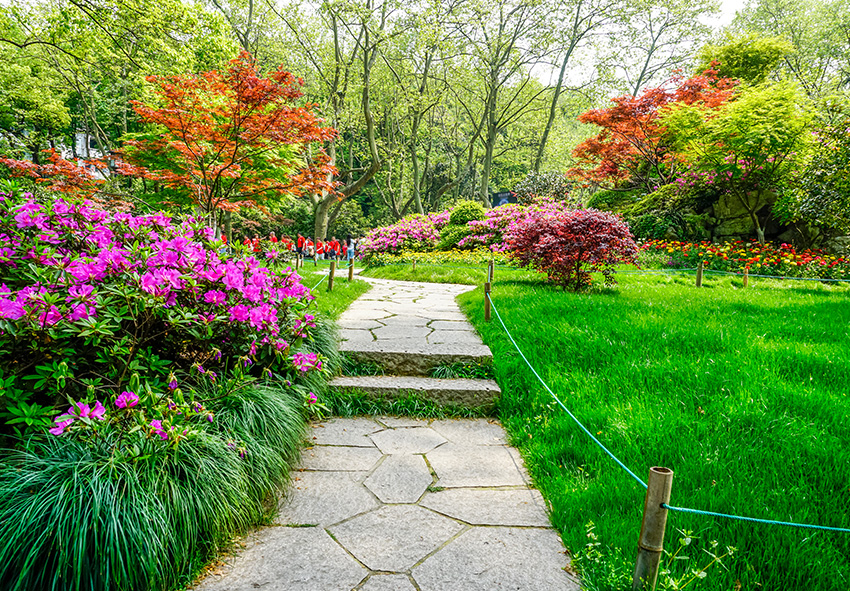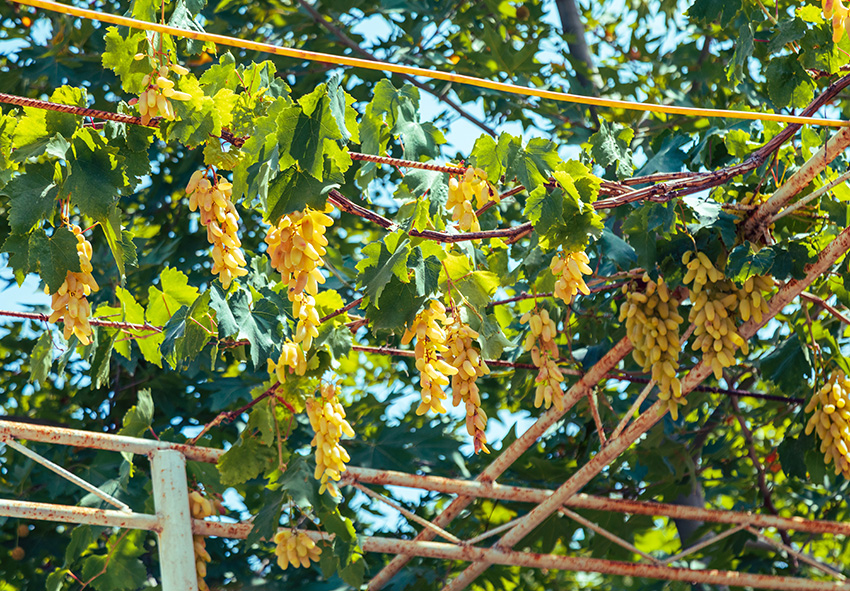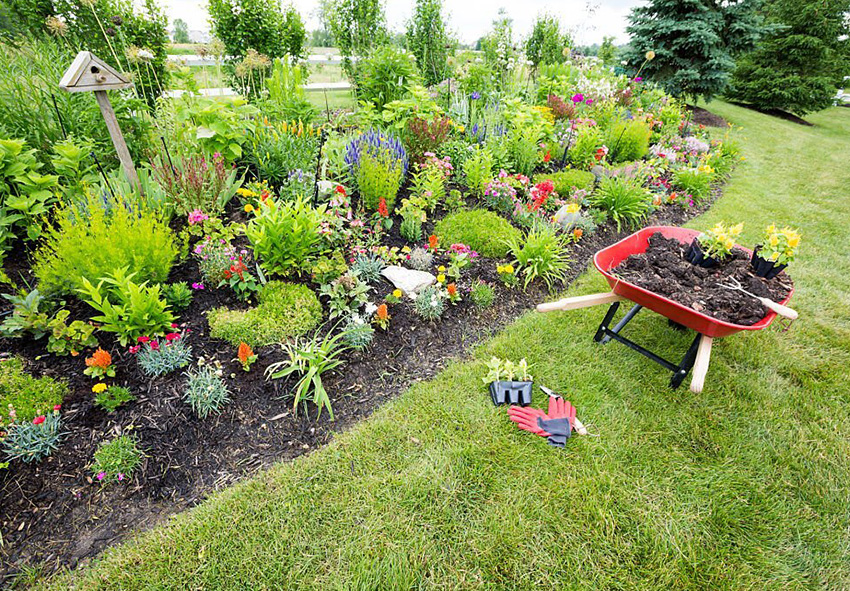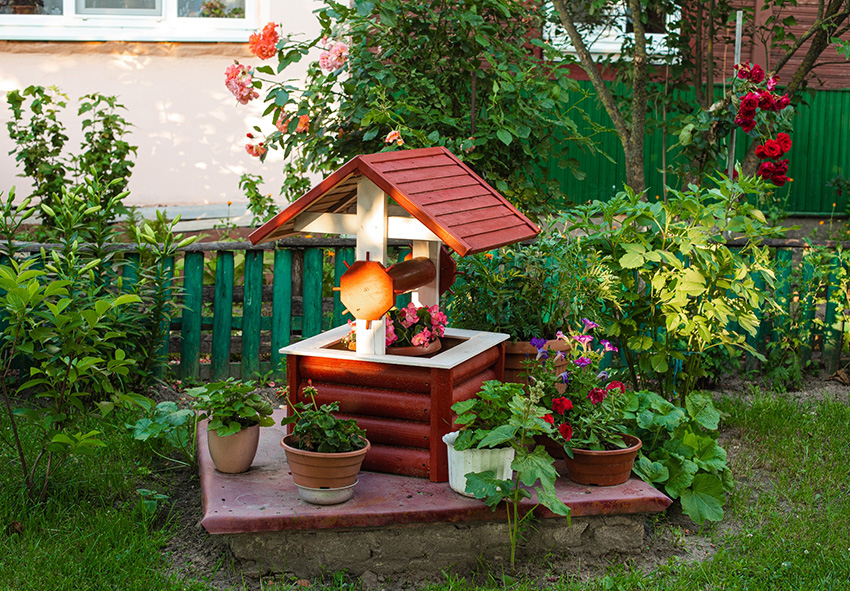Summer is the time of year when our gardens can truly shine, bursting with color and life. However, with the heat and humidity, summer can also be a challenging season for gardeners. In this article, we will explore some essential tips for keeping your garden thriving during the summer months. From understanding the characteristics of the summer growing season to watering tips and plant selection, we’ve got you covered.
Understanding the Summer Growing Season

It is critical to grasp the features of the summer growing season in order to maintain your summer garden prospering. Summer temperatures are high, humidity is often high, and daylight hours are lengthy. These factors can have a big impact on plant growth and development. High temperatures and humidity can cause stress and dehydration in plants, while long days might interfere with flowering and fruiting.
To overcome these obstacles, it is critical to select plants that are appropriate for the summer growing season. Sunflowers, zinnias, marigolds, and petunias are among the plants that thrive in the summer. These plants are tough, heat-tolerant, and thrive in the hot, dry summer weather.
Watering Tips for Summer Gardening
Summer gardens require regular irrigation. With the hot and dry weather, it is critical that your plants receive appropriate moisture. When temps are colder, water your plants early in the morning or late in the evening. Watering throughout the day might cause evaporation, which means your plants may not get enough moisture.
When watering your plants, make sure to soak them well so that the water reaches the roots. Avoid shallow watering since it promotes shallow root growth and makes your plants prone to drought. Also, use mulch around your plants to assist retain moisture and avoid evaporation.
During the summer, it is also necessary to conserve water in the garden. Consider installing a drip irrigation system, which provides water directly to the roots of the plants. This technology is far more efficient than standard sprinkler systems, saving you both time and money.
Fertilization and Nutrient Management in Summer
Proper fertilization is essential for the growth and development of your summer garden plants. It helps to promote strong root systems, vibrant foliage, and bountiful blooms. When it comes to fertilizing your summer garden, there are a variety of different options to choose from. Organic fertilizers such as compost, bone meal, and blood meal are great choices for those looking to avoid harsh chemicals. They provide slow-release nutrients that will nourish your plants throughout the growing season.
If you prefer a more traditional approach to fertilization, there are also plenty of synthetic fertilizers available on the market. These can be applied as granules, liquids, or powders, and they typically provide a quick burst of nutrients that your plants can use right away.
In addition to choosing the right type of fertilizer, it’s also important to consider the application method. For example, foliar feeding (spraying nutrients directly on the leaves) can be a great way to provide a quick nutrient boost to your plants. However, it’s important to follow the manufacturer’s instructions carefully to avoid over-fertilization.
Composting is another great way to nourish your summer garden. By creating your own compost pile, you can turn kitchen scraps, yard waste, and other organic matter into nutrient-rich soil amendment. Not only does this reduce waste, but it also provides a free and sustainable source of fertilizer for your plants.
Pest and Disease Control for Summer Gardens
Even if you fertilize and care for your summer garden plants properly, they are still vulnerable to a number of pests and illnesses. There are numerous possible concerns to be aware of, ranging from aphids and spider mites to powdery mildew and blight.
Prevention is the key to effective pest and disease control in the summer garden. You can assist in maintaining your plants healthy and productive by taking actions to limit the possibility of pests and illnesses.
Good garden hygiene is an excellent preventative technique. This includes removing dead plant material, keeping the garden clean, and disposing of unhealthy plants properly. Rotate your crops every year to avoid the accumulation of soil-borne pests and illnesses.
If you do have insect or disease problems in your summer garden, you can attempt a range of natural and organic treatment options. For example, introducing beneficial insects such as ladybugs and lacewings can aid with pest control. To discourage pests and control fungal infections, you can make homemade sprays using items like garlic, spicy peppers, and neem oil.
Maximizing Your Summer Harvest

Finally, when it comes to summer gardening, one of the most important goals is to maximize your harvest. After all, what’s the point of growing all those beautiful plants if you don’t get to enjoy the fruits (or vegetables) of your labor?
One key strategy for maximizing your summer harvest is to plan ahead. Take the time to research which plants are best suited for your climate and soil type, and plan your garden accordingly. Be sure to consider factors like spacing, sun exposure, and watering needs when deciding where to plant each crop.
Succession planting is another great way to keep your garden productive throughout the summer. This involves planting new crops as soon as the old ones are finished, which helps to ensure a continuous supply of fresh produce.
Finally, once you’ve harvested all of your summer garden bounty, be sure to properly store and preserve it. Depending on the type of produce, this might involve canning, freezing, or simply storing in a cool, dry place. By taking the time to properly preserve your harvest, you can enjoy the fruits of your labor well into the fall and winter months.
When it comes to choosing which plants to grow in your summer garden, there are plenty of options to choose from. Some popular choices include tomatoes, peppers, cucumbers, zucchini, and herbs like basil and thyme. These plants are well-suited to the warm temperatures and long days of summer, and they’re sure to provide a bountiful harvest if properly cared for.
In conclusion, with proper fertilization and nutrient management, effective pest and disease control, and strategic planning and harvesting, your summer garden can be a productive and rewarding endeavor. By choosing the right plants, using the right techniques, and paying close attention to your garden’s needs, you can enjoy fresh, homegrown produce all summer long.
The Best Summer Plants for Your Garden
Summer is the season for enjoying the outdoors and creating a vibrant garden bursting with colors and fragrances. With the right selection of summer plants, your garden can be the talk of the neighborhood. Here are some of the best summer plants to grow in your garden.
Heat-Tolerant Plants
Heat-tolerant plants are essential for a successful summer garden. Marigolds, zinnias, and cosmos are not only gorgeous, but they also flourish in hot weather. Lantana, verbena, and petunias are other heat-tolerant plants. When selecting plants for your summer garden, keep the ability to resist the hot sun in mind.
Seasonal Herbs and Vegetables
Summer is also a great time to grow your own herbs and vegetables. From basil and thyme to tomatoes and peppers, there are many fantastic alternatives for adding flavor and color to your garden. Producing your own food can also help you save money while providing you with fresh vegetables for your meals.
Plant Appearance
Aside from the advantages of heat tolerance and edible plants, it is also vital to examine the plant’s look. Salvias, for example, have blue and purple hues that can complement other colors in your garden, while sunflowers have bright yellow blossoms that can provide a joyful touch. Consider the overall look you want to accomplish and select plants that complement your idea.
Summer Garden Maintenance: Weeding, Deadheading, and Pruning

Maintaining your garden in the summer is crucial to keeping it healthy and looking its best. Here are some tips for weeding, deadheading, and pruning in your summer garden.
- The Importance of Garden Maintenance
Weeding, deadheading, and pruning are essential tasks for a healthy garden. Weeds can quickly take over and compete with your plants for water and nutrients. Deadheading, or removing spent blooms, encourages new growth and prolongs the blooming season. Pruning helps shape and maintain the size of your plants.
- Best Practices for Weeding, Deadheading, and Pruning
When it comes to weeding, it’s best to tackle the task early and often to prevent weeds from becoming established. Use a hoe or hand tool to remove weeds at the root. Deadheading should be done regularly to prevent plants from going to seed and to encourage more blooms. For pruning, make sure to use clean, sharp tools and cut back to a healthy bud or branch.
- Garden Cleanup and Preparation for Fall
As summer comes to a close, it’s important to clean up your garden and prepare it for the cooler months ahead. Remove any dead or diseased plants, and cut back perennials that have finished blooming. Consider planting fall-blooming bulbs and perennials to extend your garden’s season.
In conclusion, summer gardening can be a rewarding and enjoyable experience with the right plants and maintenance. Consider the heat-tolerance, appearance, and practicality of the plants you choose, and make sure to stay on top of weeding, deadheading, and pruning for a healthy and thriving garden all season long.
Creating Shade and Protecting Your Garden from the Heat
Summer is a wonderful season to enjoy your garden, but the heat and sun can be detrimental to your plants. It is critical to provide shade and shelter from the sun’s harmful rays in order for your garden to thrive. In this post, we’ll talk about why it’s important to build shade structures and choose shade-tolerant plants, as well as how to protect plants from high heat and sun damage.
There are numerous ways to provide shade for your plants to shield them from the hot sun. A shade structure, such as an arbor, pergola, or umbrella, is one alternative. These buildings not only give shade but also add beauty to your yard. Another alternative is to use shade fabric, which comes in a variety of densities, to restrict how much sunlight gets your plants.
When selecting plants for your summer garden, make sure they can withstand the heat and sun. Sunflowers, zinnias, and marigolds are among the greatest plants to cultivate in the summer. These flowers not only provide color to your yard, but they are also heat resistant. Herbs like basil and oregano, for example, may grow in hot, dry environments.
It is critical to protect your plants from high heat and sun damage in addition to providing shade and selecting shade-tolerant species. One method is to water your plants thoroughly and on a regular basis. This will help to keep the soil moist and your plants from drying out. Mulching around your plants is another alternative that helps to conserve moisture and manage soil temperature.
Summer Garden Design: Incorporating Color, Texture, and Shape

Color, texture, and shape all play a role in creating a lovely summer garden. This part will go over the concepts of summer garden design, how to include these aspects, and how to create a unified and appealing summer garden design.
- When planning your summer garden, keep design elements in mind, such as balance, proportion, unity, and variety. These concepts work together to create an attractive and harmonious design. Planting the equal amount of flowers on either side of a pathway or garden bed, for example, can help you achieve balance.
- Another important aspect of summer garden design is the use of color. Choose flowers in complementary colors, such as purple and yellow or pink and green, to create a stunning color scheme. Texture is also important for adding depth and interest to your garden. You can add texture by choosing plants with a variety of leaf shapes and textures.
- Finally, another important aspect of summer garden design is the incorporation of shape. Planting flowers in circular patterns or utilizing trellises or other structures to provide vertical appeal might help you create fascinating forms.
Conclusion
In conclusion, creating shade and protecting your plants from the heat, as well as incorporating color, texture, and shape, are all important factors to consider when designing a summer garden. By following these tips and selecting the right plants for your garden, you can create a beautiful and thriving summer garden that you can enjoy all season long. So, get out there and start planting!
Frequently Asked Questions (FAQs) about Summer garden
1. What are the best plants to grow in the summer season?
Summer is a fantastic time to cultivate a wide range of plants. Opt for heat-loving varieties like tomatoes, peppers, basil, and sunflowers for a vibrant and productive summer garden. Additionally, consider drought-resistant options such as lavender, rosemary, and succulents to conserve water during the hotter months.
2. How often should I water my Holland garden during the summer?
Proper watering is crucial during summer. Generally, most plants require about 1 inch of water per week, but this can vary depending on your location and soil type. To maintain soil moisture, water deeply in the morning or late afternoon to reduce evaporation. Consider using mulch to retain moisture and prevent weeds.
3. Can I grow vegetables in containers on my balcony or patio during the summer?
Absolutely! Many vegetables thrive in containers. Choose compact varieties of tomatoes, peppers, and herbs, and make sure your containers have good drainage. Regularly check for water needs since containers can dry out quickly in the summer heat. A sunny balcony or patio can be an excellent space for a bountiful mini-garden.
4. Are there any organic pest control methods for my summer garden?
Yes, there are various organic pest control methods. Introduce beneficial insects like ladybugs and praying mantises, and use neem oil or garlic spray to deter common garden pests. Companion planting can also help by placing plants together that naturally repel pests or attract beneficial insects.
5. Can I order these summer Netherlands flowers and plants from your online store?
We appreciate your interest! At our online store, you’ll find a wide selection of summer-ready plants, seeds, and gardening supplies. Whether you’re looking for vibrant annuals, drought-resistant perennials, or essential gardening tools, we have you covered. Check our online store for the latest availability and have your favorite summer garden additions conveniently delivered to your doorstep.
Published: 17.05.2023
